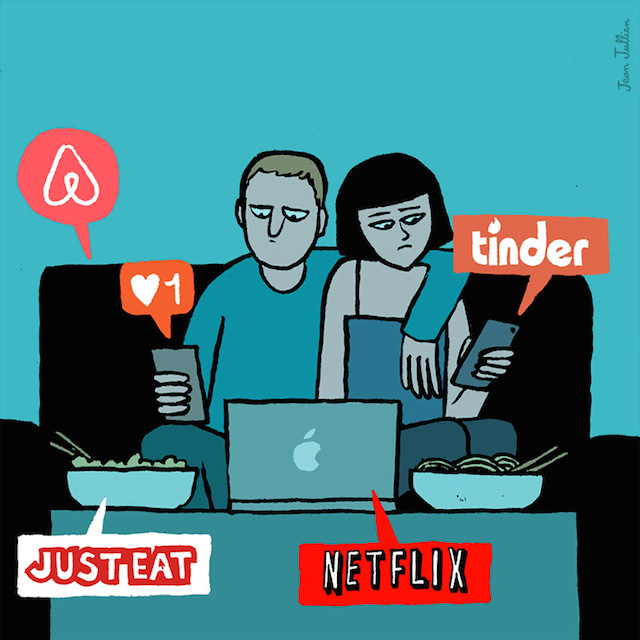Presentation Slides + Script
Hi and welcome to my presentation about Persuasion
For
my original COP theme, I looked into the History of Tobacco Advertising and how
attitudes towards smoking have changed in the last 100 years, exploring the
techniques used in the advertisements. The adverts usually displayed an
attractive slender figured woman, often a celebrity, demonstrating how sex
appeal was, and still is used (more about that in a bit), which is a key
persuasive technique, although it is seen as quite manipulative.
Manipulation in advertising refers to the unethical
use of misguided promises in order to get someone to buy a product. An “expert
opinion”, for example an actor playing a doctor, associating the product with a particular
desired lifestyle, and attractiveness, for example placing an attractive woman
near a car to sell the car, all psychologically create an urge to buy the
product.
Advertising is
a form of marketing communication used
to persuade an audience to
take or continue some action, and is widely regarded across the world. It has been
said that on average, we see 300 to 700 marketing messages each day, which I
feel is quite alarming.
These
thoughts then led me to question the main purpose of Advertising as a whole.
What is Persuasion?
Persuasion is an umbrella term of influence, and refers to the act of
influencing a person’s beliefs, attitudes, intentions, motivations or
behaviors. As Human beings it is natural to want what is best for us, so either
being the persuader or the persuaded, personal gain is a key aspect when
looking at this theme.
The use of sex appeal in advertising was originally inspired by
the Philosopher Sigmund Freud, who believed that a lot of normal human
behaviour is attributed to a deep sexual drive. According to Freud, human
beings are born with a desire for sexual involvement
with the parent of the opposite sex,
also referred to as the Oedipus complex, an idea that advertising company’s
have taken an interest in, and found to be a successful persuasive technique.
Aristotle, a greek
philosopher also had an influence on the advertising
we see today, suggested that to persuade someone you need 3 things; Logos,
which is a logical
appeal, Ethos, an appeal to the authority or
credibility of the presenter for example a doctor or a celebrity endorsing a
product, and Pathos, which is an appeal
to the audience’s emotions, for example anger or fear.
In my
opinion, anything that can influence what you initially think about something
is bad. I believe that as a human being you should know what is best for you,
what you want and what you need, without the influence of advertising.
I find it really uncomfortable to think
about the idea that forces may be acting on us
subconsciously, through means of advertising and others, which has swayed me to
develop a negative attitude towards the topic of ‘persuasion’.
On the other hand, persuasion can be a
tool for positive effect. These stop smoking advertising campaigns use
shock tactics to scare the viewer away from Cigarettes. Though the company’s do
have good intentions, the avertisements are still used for personal gain, in
order to gain publicity. In the end all persuasive tactics come down to
personal gain.
An artist who has used persuasion as a subject in their work, Cristobal
Schmal, has tackled it in a way that refers to
hypnosis and being mindlessly open to certain influences. Although I don’t
particularly like this piece, I feel like it mirrors my thoughts and feelings
effectively.
This is a page from my sketchbook, where at
first I started drawing based on cigarettes and
the way sex is used to sell products. The image at the top is my favourite,
because I feel like it mirrors sexuality in advertising in an emphasized way. I
feel that I really tried to experiment in this sketchbook and made some
successful pictures.
Explain each image. (Threat, Sexualisation both forms of persuasion)
I then
asked myself what Persuasion would look like, and I began to draw these
mysterious, evil looking hands, which I feel represent it quite well.
Here I tried to convey someone being persuaded. I
used the concept of a lock and key to represent how persuasive techniques can
effect our thoughts subconsciously.
This
image once again referred to the idea of persuasion being a mysterious sinister
force. I used the colour to purple to represent a kind of passion, that is dark
and poisonous.
Moving on
to the next stage of this project, these are some roughs I created for my
diagram; ‘A Diagram of Persuasion’. On the diagram I intend to outline the key
techniques of persuasion, using well thought out conceptual imagery. Through
using my sketchbook, I have developed a lot of concepts that would illustrate
persuasion effectively, for example the lock and key.
Another
artist I feel really influenced by is Tom Cole. I really love his methods of
working and use of media, and how imaginative his pieces are. In my opinion his
work is really effective in creating
atmosphere, mostly through colour. I Intend to take inspiration from Tom for my
diagram also. .
Thankyou for
listening. Any questions?
---
In regard to my presentation, I found the process of constructing the presentation really useful in terms of gaining a better understanding of my chosen subject. I felt that through my notes I really managed to express my own personal opinion of my subject and back it up using relevant evidence.
In regard to the delivery of my presentation, I feel like my presentation was a disaster. I had fully prepared a script that was logically structured, however I felt it would be unprofessional to just read from a sheet. Unfortunately I let nerves get the better of me and my presentation seemed unstructured and illogical, which is reflected in my feedback. I feel that as this was the first presentation I have done in front of my class mates I was understandably nervous, however as I do more and spend more time with them, I will hopefully gain more confidence when talking about my work.
For my visual diagram, my plan of action is to take inspiration from Chris(simpsons)Artist and satirize the persuasive techniques that advertising companies use.








































